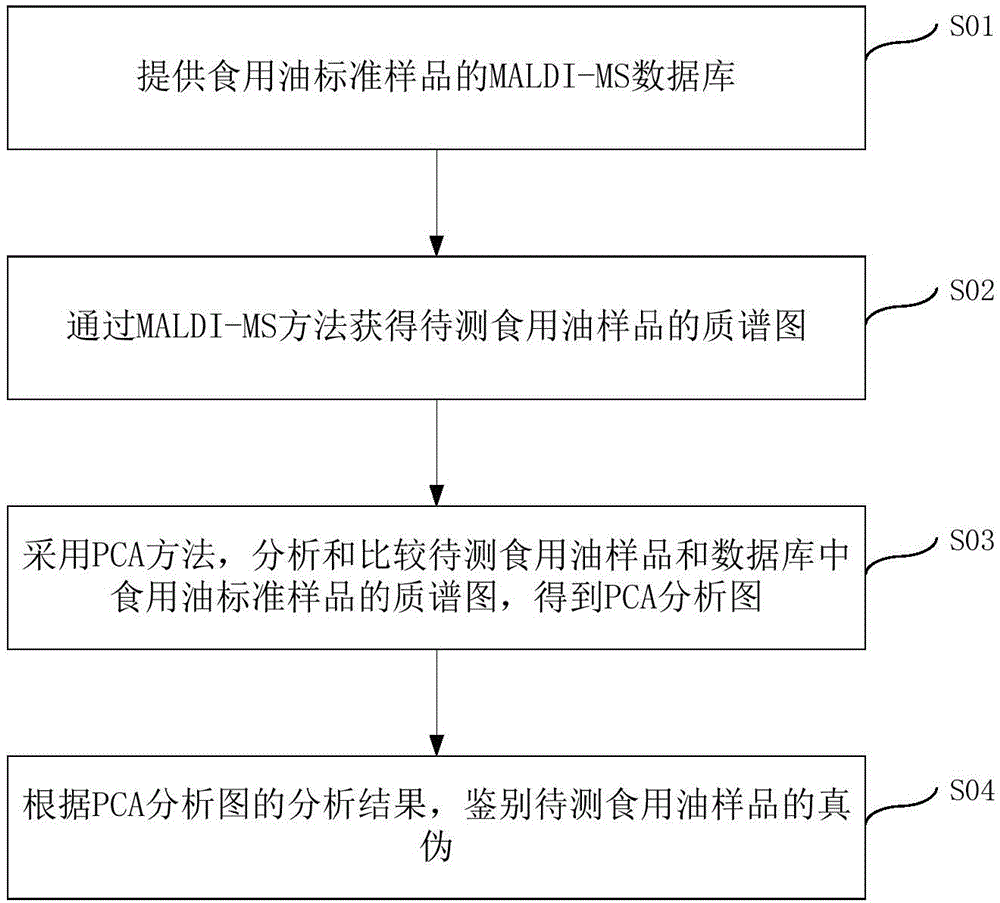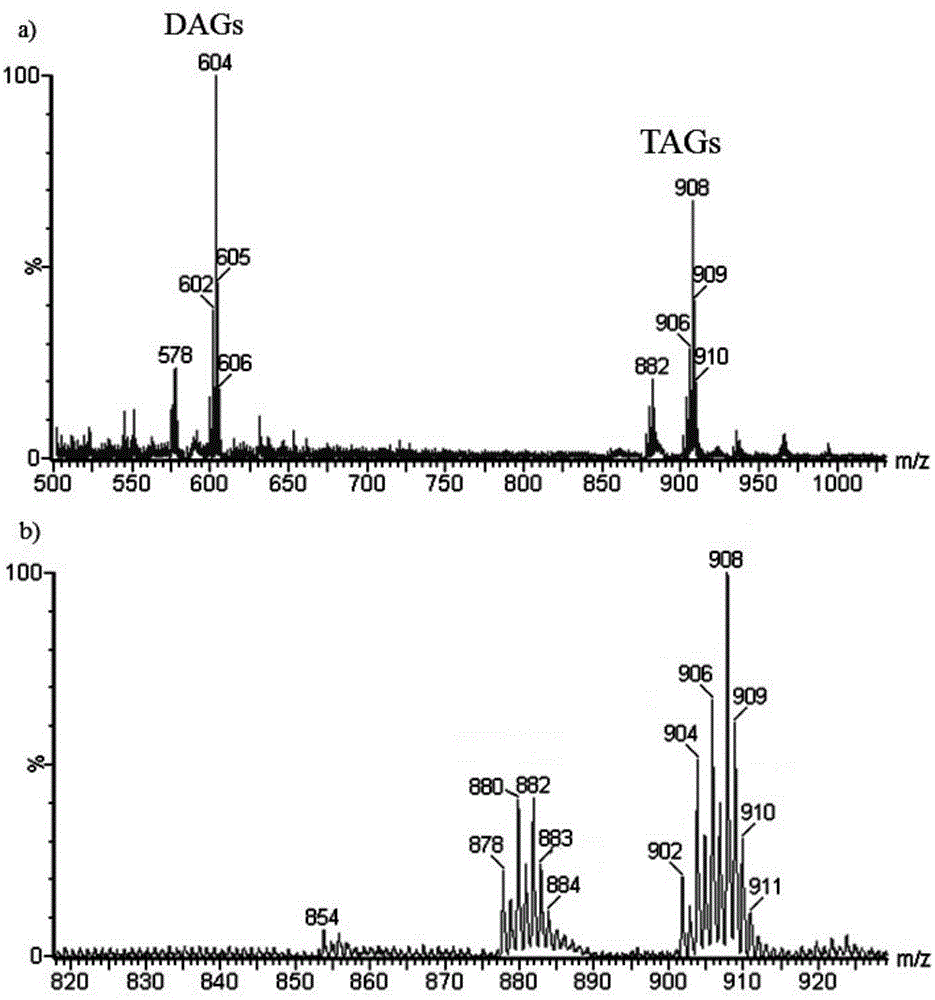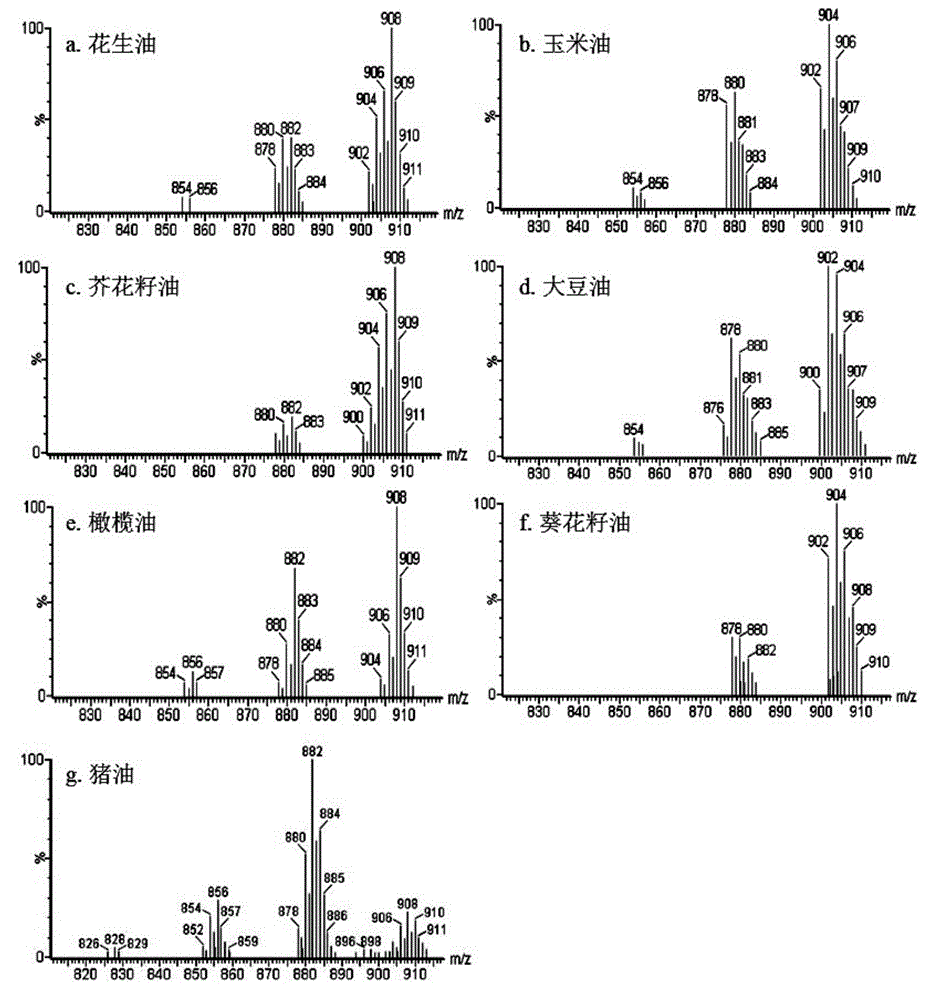Method for distinguishing edible oil
A technology for edible oil and standard samples, applied in the field of identification of edible oil, can solve the problems of complicated steps, lack of a mass spectrum database of edible oil standard samples, consuming a lot of time and manpower, etc., to achieve the effect of avoiding poisoning
- Summary
- Abstract
- Description
- Claims
- Application Information
AI Technical Summary
Problems solved by technology
Method used
Image
Examples
Embodiment 1
[0052] Step S101: Collect the mass spectrograms of peanut oil, canola oil, olive oil, corn oil, soybean oil, sunflower oil, lard standard samples (i.e. pure edible oil of a single variety) by MALDI-MS method, and combine the above-mentioned The mass spectra of edible oil standard samples were assembled into a MALDI-MS database. Take peanut oil as an example, such as figure 2 Shown is the typical mass spectrum of the edible oil standard sample obtained by the MALDI-MS method in the embodiment of the present invention. Among them, a) the mass spectrum of peanut oil (m / z range 500-1000Da), b) the enlarged view of the TAGs region in figure a). DAGs in panel b) represent diglycerides. like image 3 Shown is the typical mass spectrogram of the edible oil standard sample obtained by the MALDI-MS method of the embodiment of the present invention, wherein, a) peanut oil, b) corn oil, c) canola oil, d) soybean oil, e) olive oil, f) sunflower oil, g) lard.
[0053] Step S102: Obtai...
Embodiment 2
[0056] Step S201: Same as step S101 in Embodiment 1.
[0057] Step S202: Obtain the mass spectrum of the edible oil sample to be tested by MALDI-MS method. The edible oil sample to be tested in Example 2 is recovered cooking oil. like Figure 4 As shown, it is a typical mass spectrogram of the recovered oil obtained by the MALDI-MS method in the embodiment of the present invention, wherein, a) recovered oil sample 1, b) recovered oil sample 2, c) recovered oil sample 3, d) recovered oil Sample 4, e) Recovered Oil Sample 5.
[0058] Step S203: Using the PCA method, analyze and compare the mass spectrograms of the edible oil sample to be tested and the edible oil standard sample in the MALDI-MS database to obtain a PCA analysis chart. Figure 7 The PCA analysis chart for distinguishing recovered cooking oil and edible oil standard samples obtained by using PCA method to analyze MALDI-MS results in the embodiment of the present invention. Among them, the solid sample point re...
PUM
 Login to View More
Login to View More Abstract
Description
Claims
Application Information
 Login to View More
Login to View More - R&D
- Intellectual Property
- Life Sciences
- Materials
- Tech Scout
- Unparalleled Data Quality
- Higher Quality Content
- 60% Fewer Hallucinations
Browse by: Latest US Patents, China's latest patents, Technical Efficacy Thesaurus, Application Domain, Technology Topic, Popular Technical Reports.
© 2025 PatSnap. All rights reserved.Legal|Privacy policy|Modern Slavery Act Transparency Statement|Sitemap|About US| Contact US: help@patsnap.com



